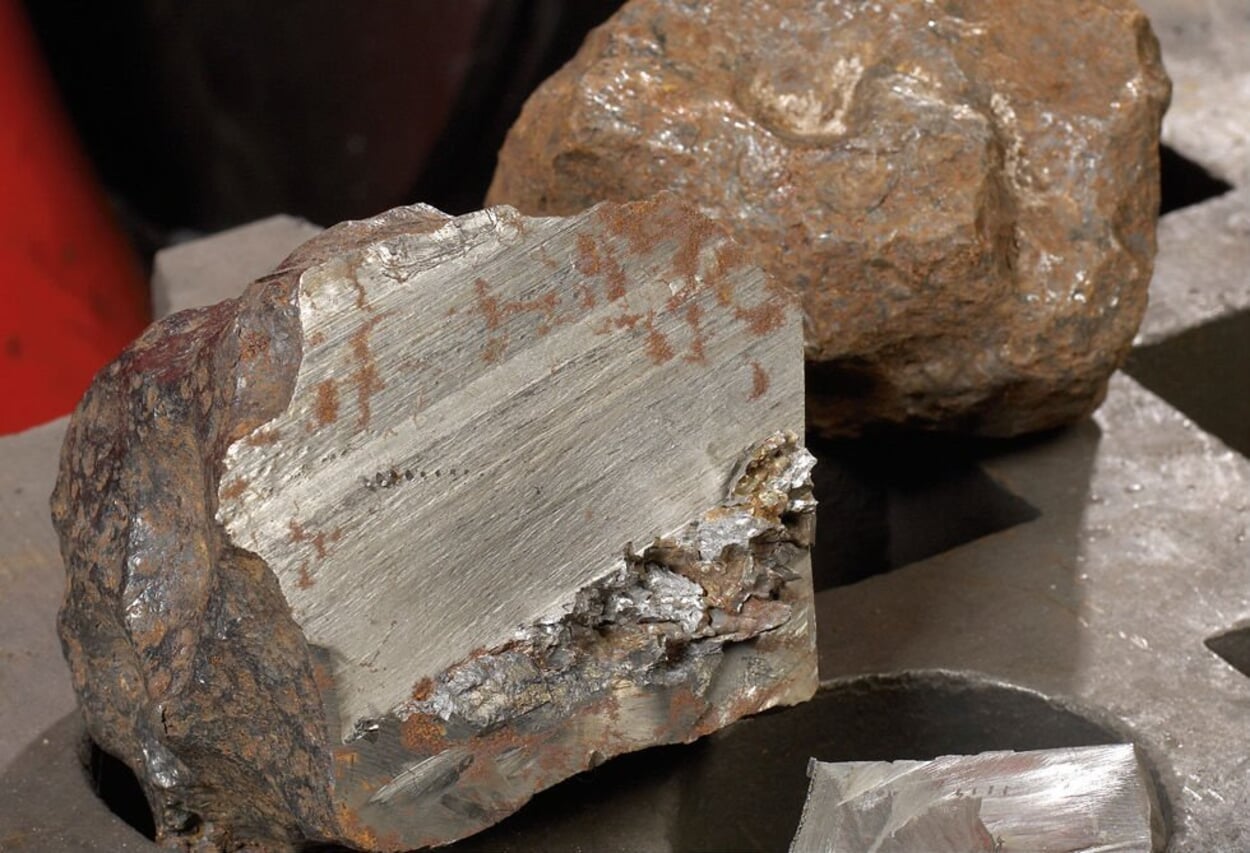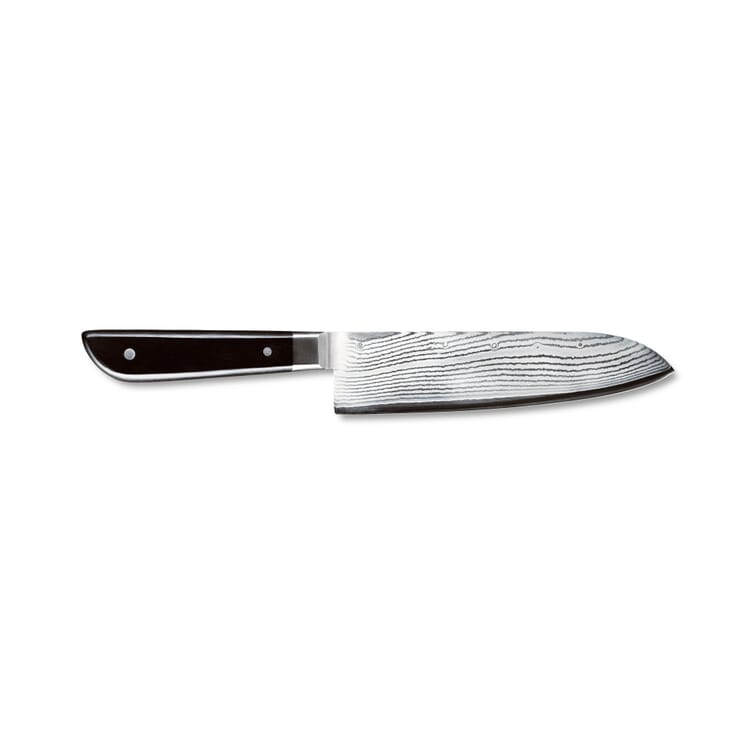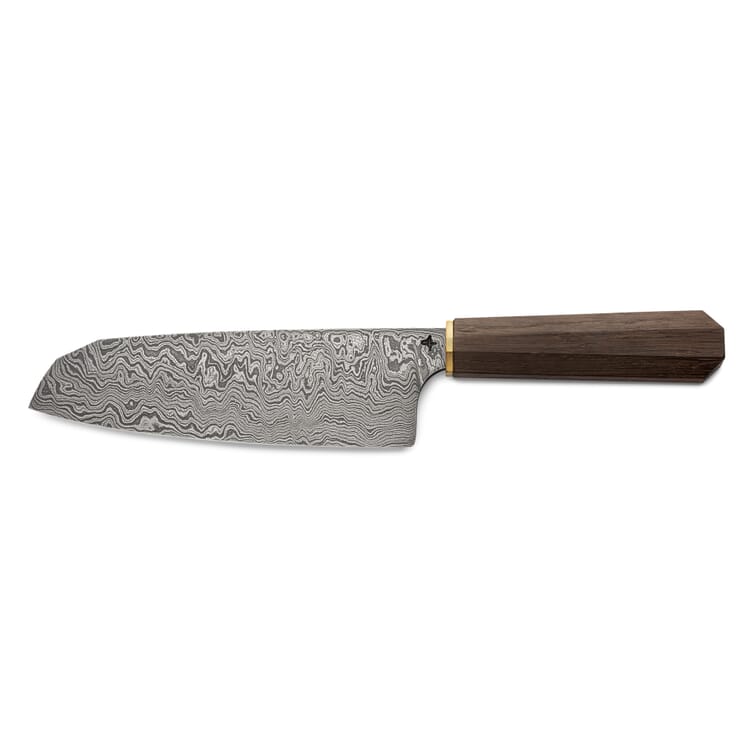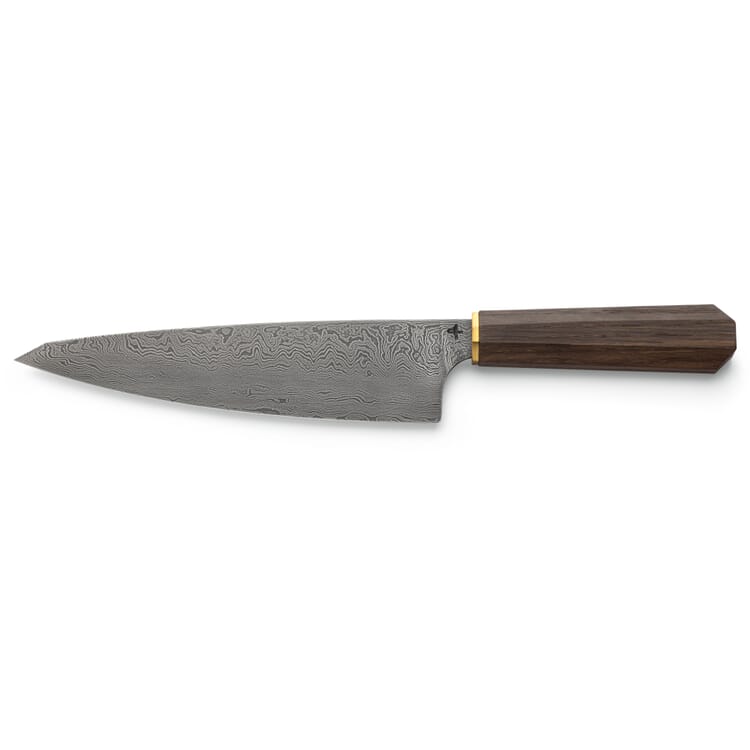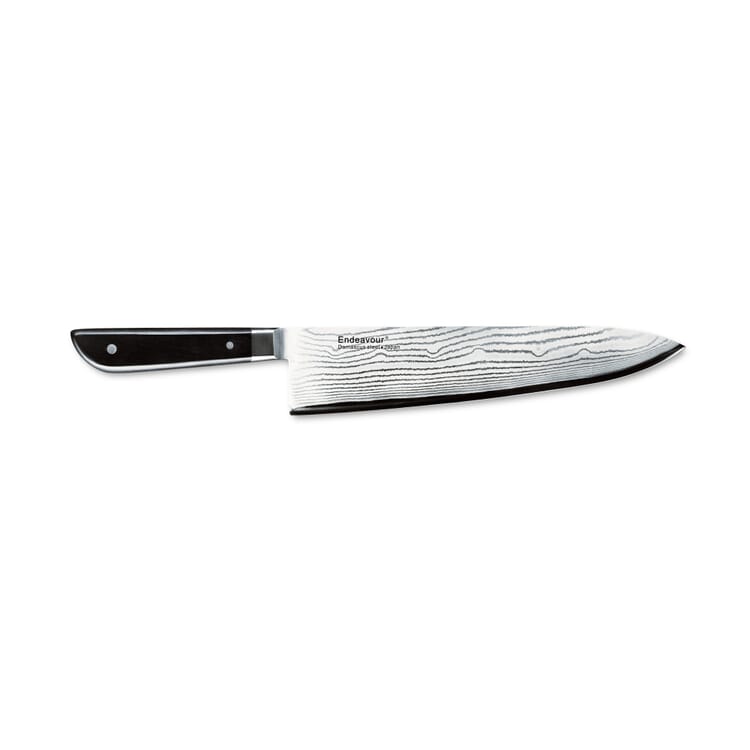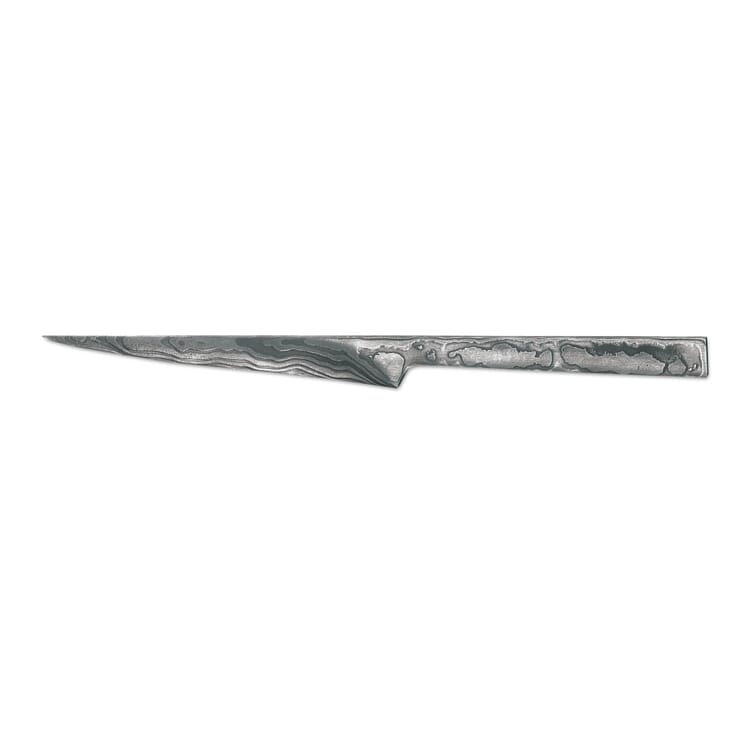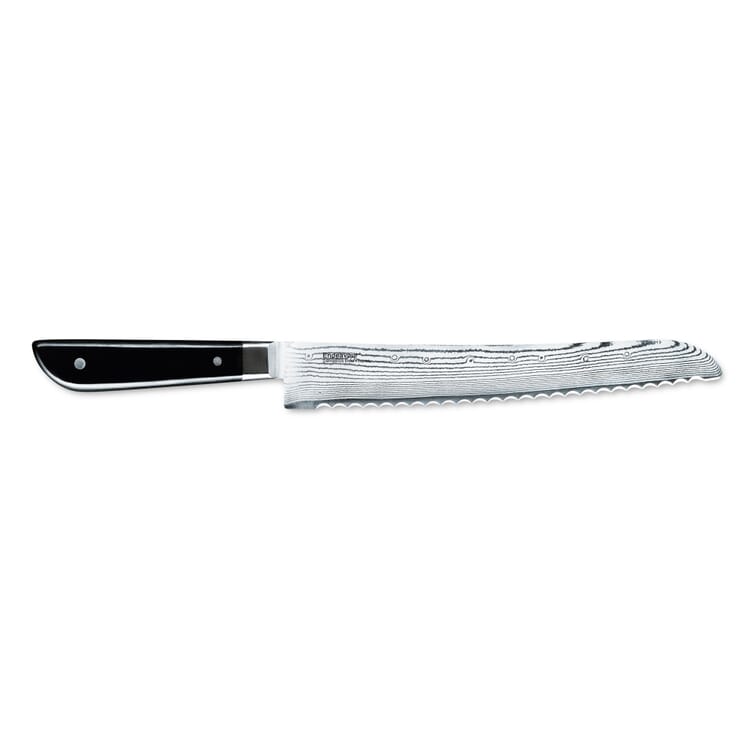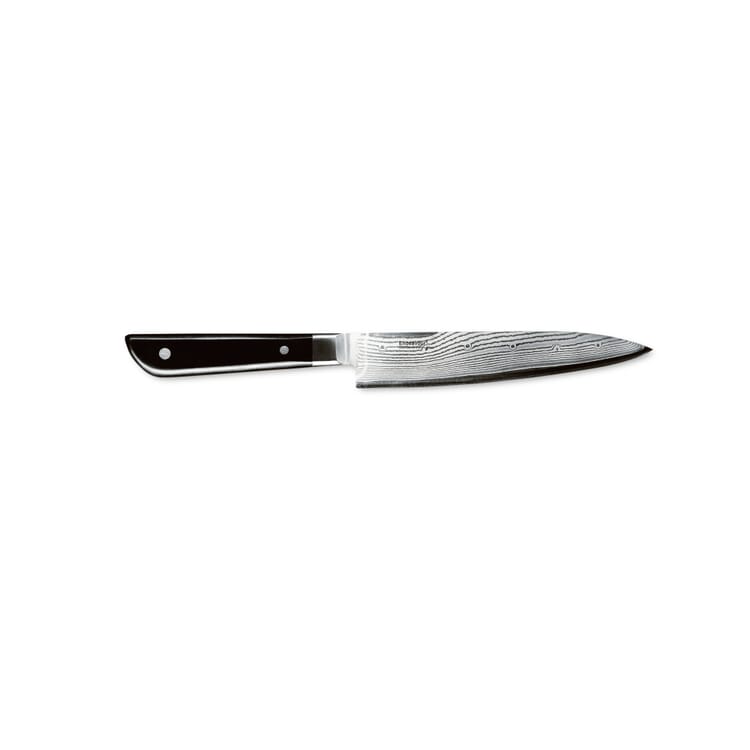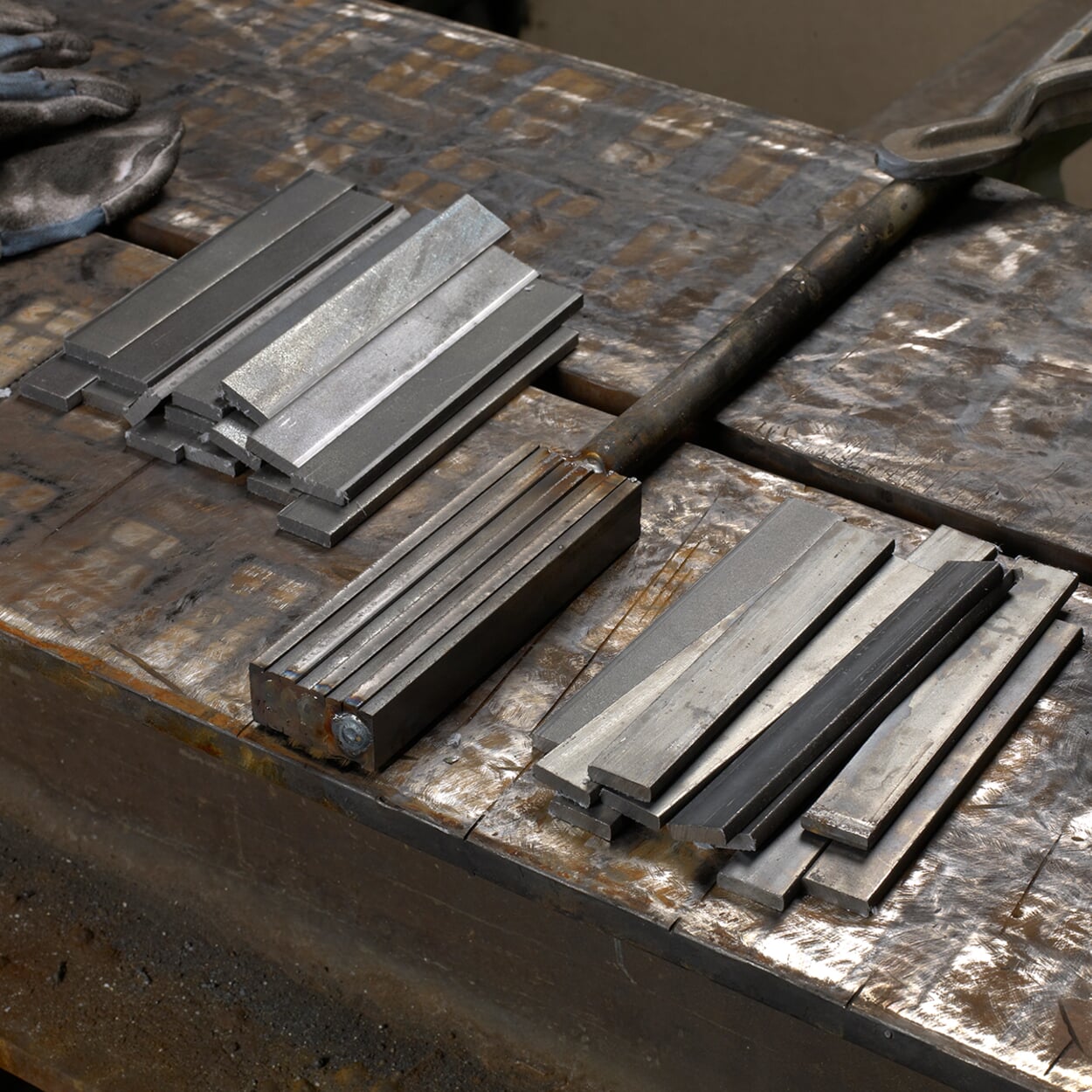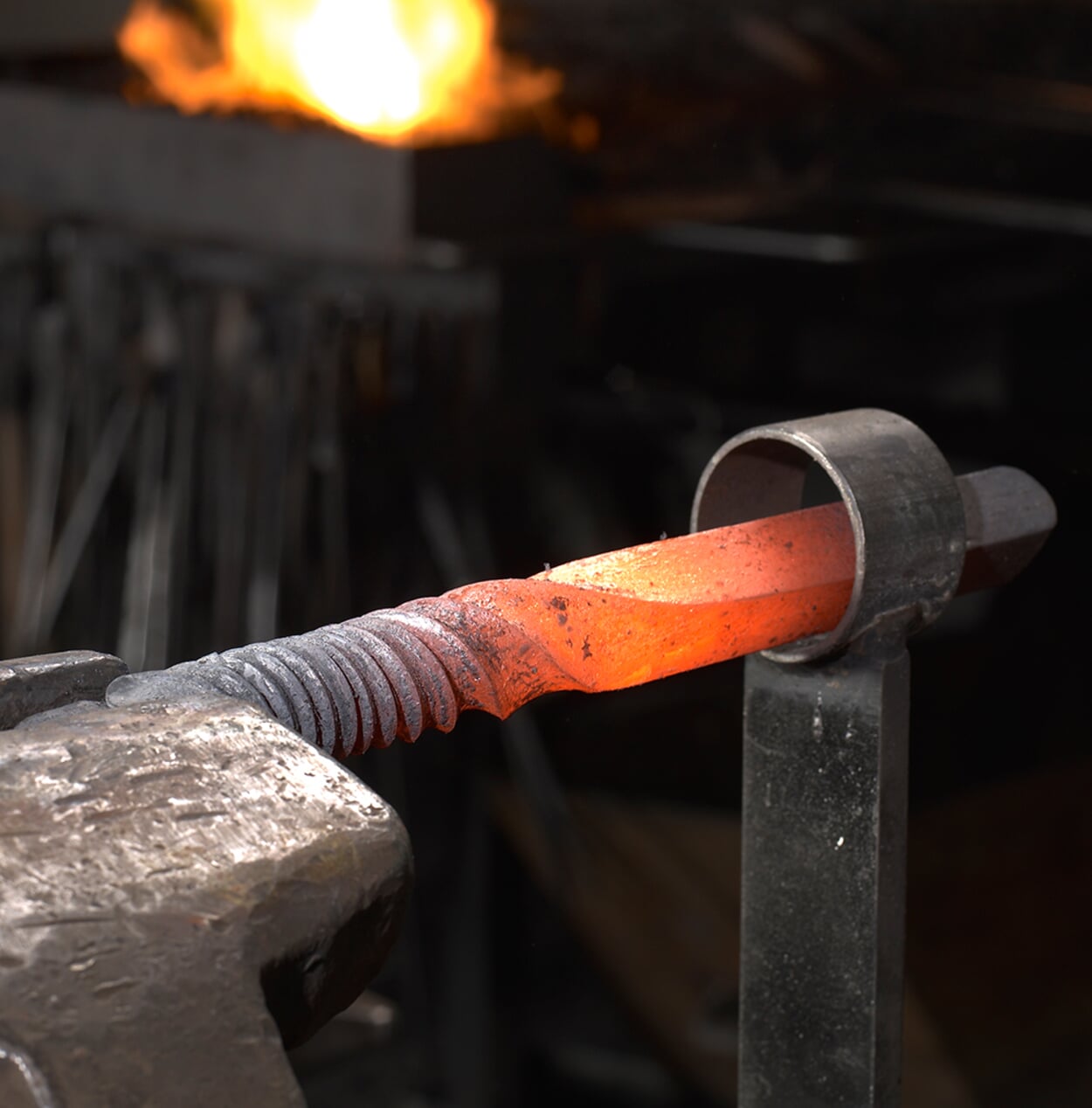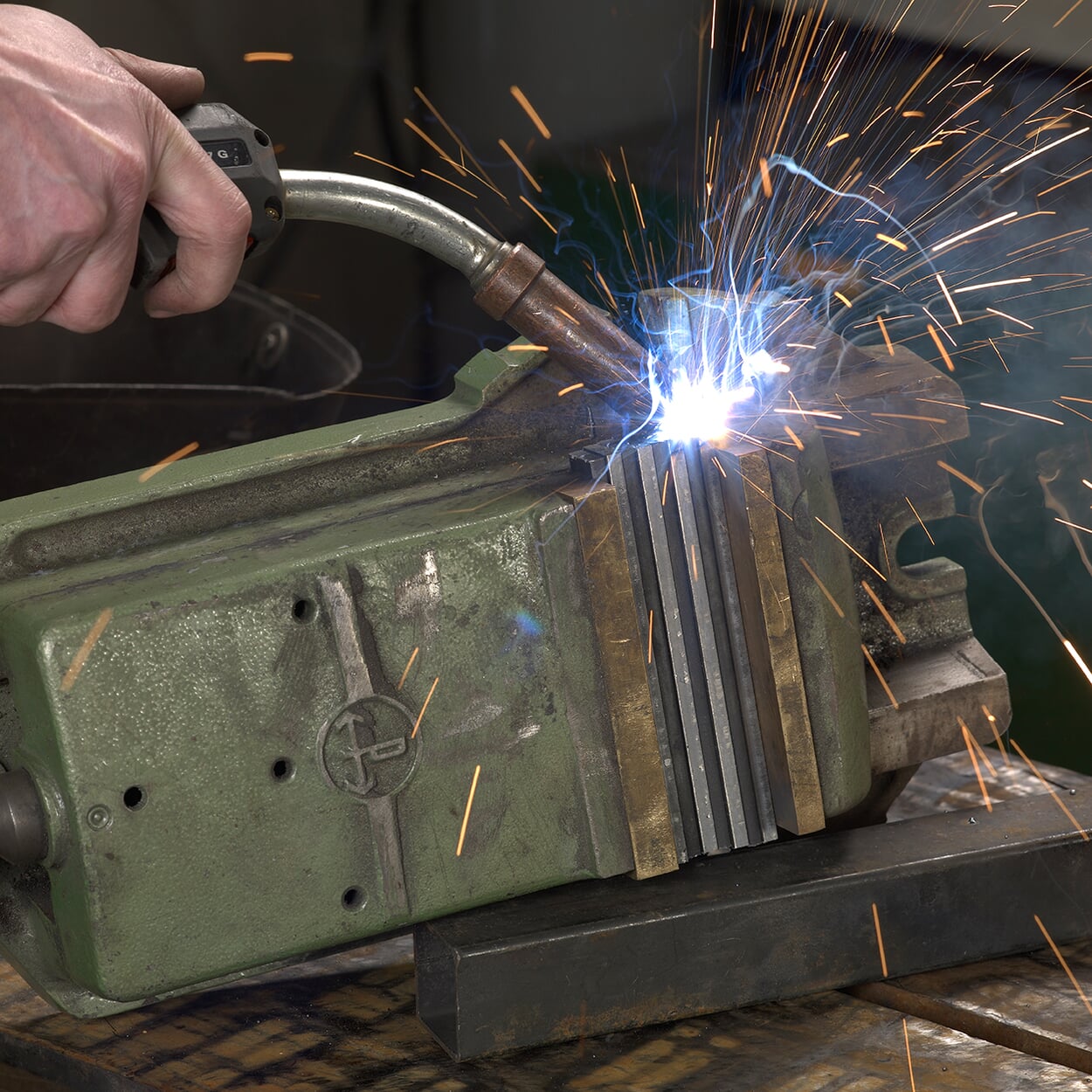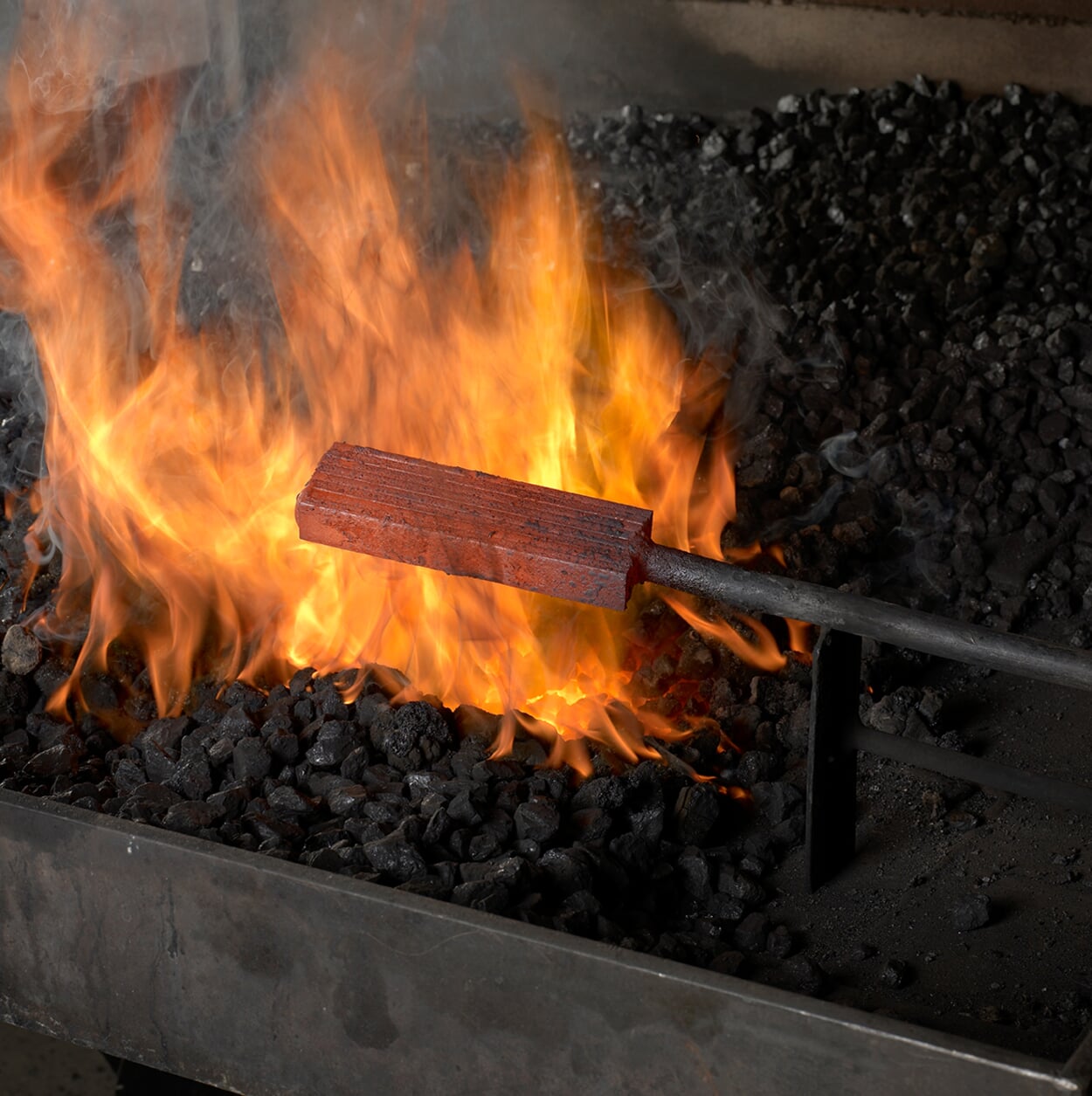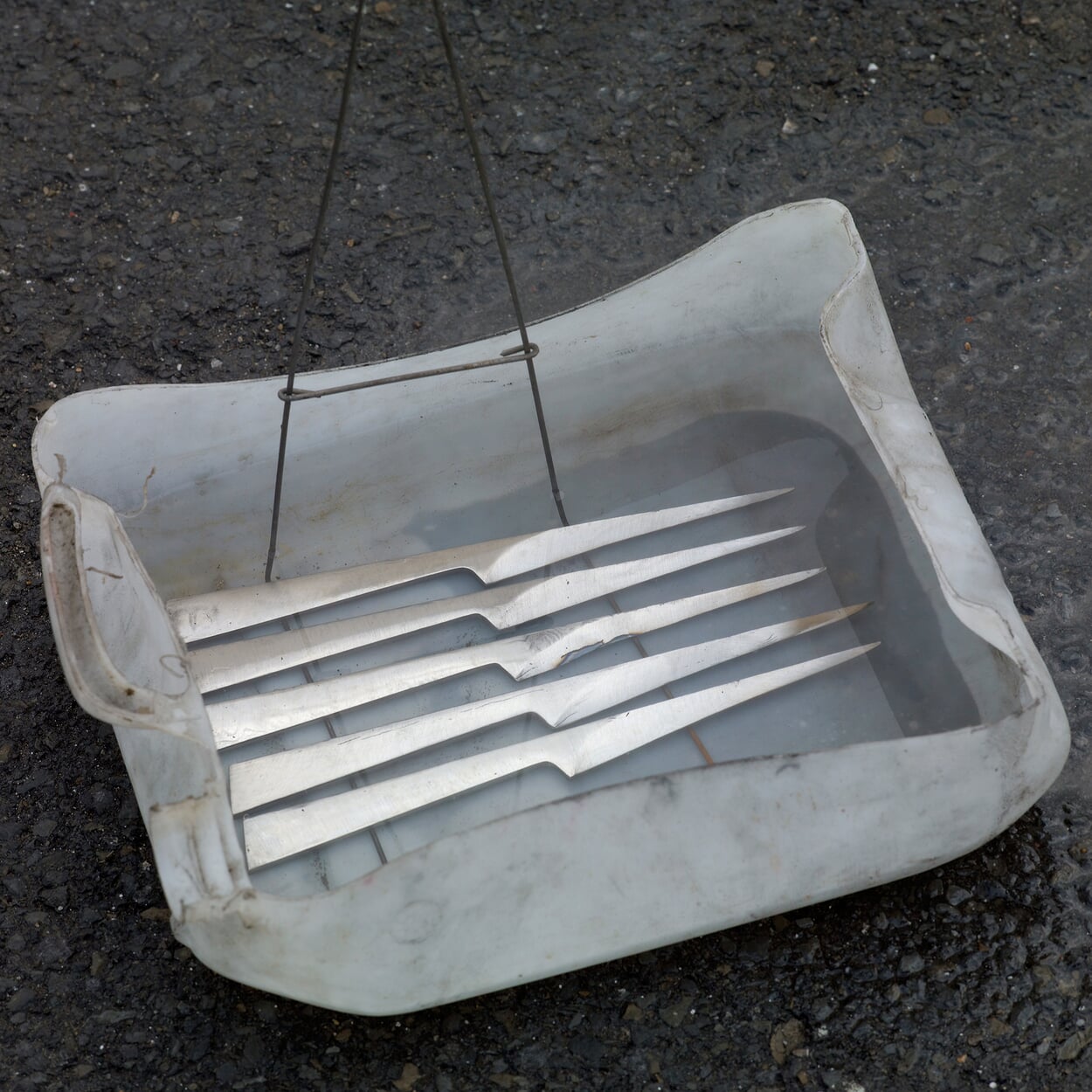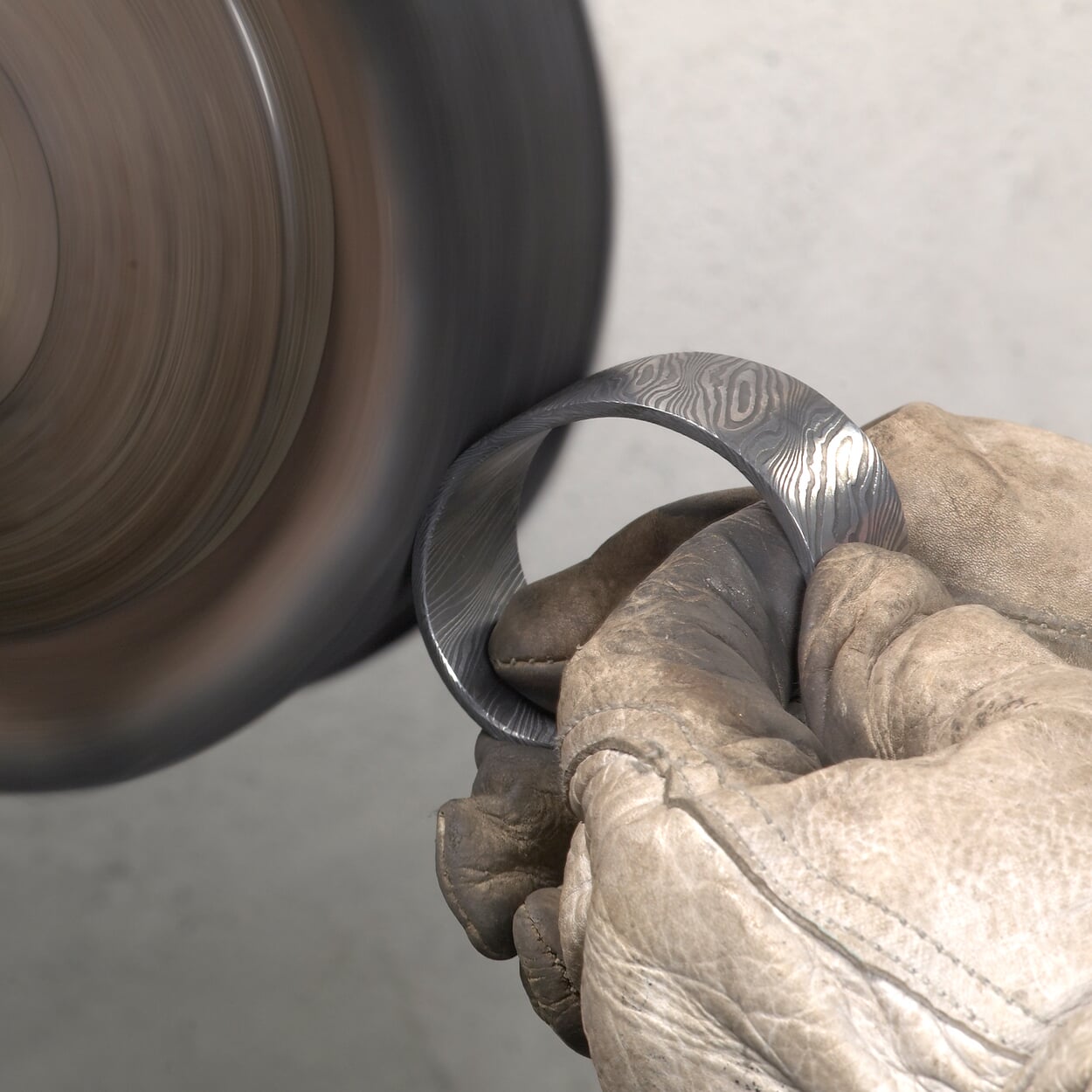Gutes aus Klöstern
Damascus steel. Myth and technology
Iron - mhd. isen; comparable with Celt. isara "strong," got. eisarn and aiz, lat. aes "ore" - is a chemical element with the element symbol Fe (lat. ferrum,). The first verifiable use of iron is found around 4,000 BC in Mesopotamia and Egypt. It was probably solid "other-worldly" iron from meteorite impacts. The term "steel" further refers to a mixture of iron with carbon. This alloyed material had already been produced in the Near East since 1,000 BC. By the 6th century B.C., knowledge of smelting iron ore had spread throughout Europe. This meant that harder steel replaced bronze, and tools made from this material improved food production for the growing population.
The "turf" ore was quarried in various deposits just a few centimeters below ground and smelted in small blast furnaces. Charcoal was needed to generate the heat, and some forests were certainly cleared for this purpose. The pig iron produced had different qualities, depending on the ore and the location. Some types were soft and elastic, while other slugs - as the iron from the prehistoric racing furnace is called - were hard but susceptible to fracture. It was in these times that the process of layer folding was developed.
To refine the quality of the rather uneven pig iron, the material was "kneaded" and a "puff pastry" of steels with different properties was created. In this way, the blacksmith succeeded in combining diverse material properties such as high hardness with great elasticity via a layer system. Weapons made in this way were extraordinarily costly, but in use they ensured the victory of the one who wielded them. It is not for nothing that even the names of the famous blades are handed down: Mimung or Excalibur.
Damascus steel products
Damascus steel production
As was customary in earlier crafts, the manufacturing know-how was passed on confidentially so that the secrets of the trade and the often long years of experience would not fall into the hands of competitors. Thus, in the myth of Wieland, the blacksmith in the Thidreks saga, the trade secrets are passed on in pictures. According to it, the blacksmith feeds iron filings mixed with wheat meal to geese and makes a new, even sharper sword from the dung. The metal had absorbed nitrogen from the goose droppings. In the modern language of blacksmiths, this is hardening by nitriding. Similarly, it can be understood that the swords were hardened in blood, among other things, because the organic components of carbon and nitrogen correspond to the surface hardening of carbo-nitriding. "Damascus steel" or "Damascus" for short, the fire-welded folded laminated steel, probably got its name after the city of Damascus in Asia Minor, where there were important workshops for this weapon steel or where the valuable material was traded. In the history of mankind, blacksmiths were part of the armament industry. If one wanted to conquer a conquered country in the long run, just this professional group was led into foreign countries to break the resistance. We already read this in the Bible about the king of Babylon: "From all Jerusalem he carried off all the nobles and all the men fit for military service, including all the blacksmiths and locksmiths." (2 Kgs 24:14-16). A monastery blacksmith store cannot be an armor store! Therefore, we have developed a special damask profile in our workshop. Based on the mythical fascination of the material, we develop utility and jewelry objects that elevate the ordinariness of the object into a special dimension. The focus is on the unique product, its wonderful radiance and the iridescent surface structure - the trademark of genuine, fire-welded damascus steel. P. Abraham OSB Head of the Königsmünster Forge, Meschede
Damascus steel consists of different types of steel. What looks completely the same from the outside is distinguished on the basis of different material properties. In general, damascus steel consists of soft and hard steels. Which steels can be welded is the product of a long series of research and trial and error.
Damascus is a composite steel at the atomic level. The strength of the bond is shown, among other things, by the fact that the material can be further forged plastically without breaking away from each other. The welded stack of layers is twisted into a spiral in the red-hot state. This creates the expressive pattern of torsion damask.
To fix the weld package, the various flat steels are welded together at the ends to form a tight package. In the past, it was wrapped with iron wire, but today we use electric welding.
Once the base material has been welded as a material, the next step is to shape the material into the form of the object. Different techniques can be used depending on the size of the series and the complexity of the final shape.
This technique prevents breaking apart in the forge fire and guarantees the lively but uniform structure.
Damascus is an extraordinarily tough and hard material, as the properties of the basic steels indicate.
Now comes the actual process of forging. The different steels are compressed by powerful hammer blows, and the surface oxides spray out of the layer pack like sparks. Whereas the first mechanical hammers used to be driven by water power, we now have an air hammer built in 1958.
Careful final polishing with chalk gives the damask its unforgettable shimmer; the pattern comes out clearly in the surface. Even if industrially sintered, stainless products are offered under the name "Damasteel", real, fire-welded Damast will always tarnish and require careful maintenance.



